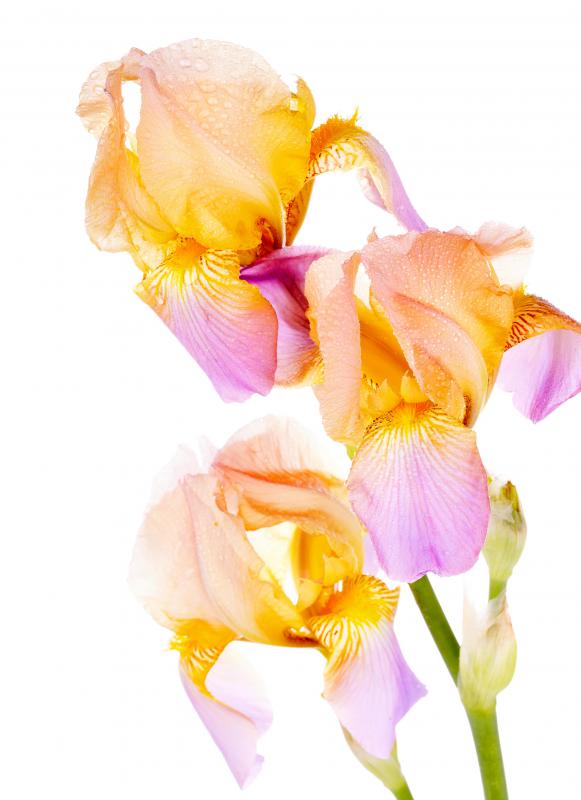At WiseGEEK, we're committed to delivering accurate, trustworthy information. Our expert-authored content is rigorously fact-checked and sourced from credible authorities. Discover how we uphold the highest standards in providing you with reliable knowledge.
What is an African Iris?
Dietes iridioides, also called African iris and fortnight lily, belongs to the Iridaceae, or iris, family of perennial plants. It originated in eastern Africa. This ornamental plant grows from rhizomes, horizontal plant stems that typically grow underground. Its flowers last only for one day, and its stalks are 2 to 4 feet (0.5 to 1.2 m) tall and capable of supporting a cluster of buds that continuously blossom from early spring to late summer. The outer petals of the African iris flower are white with yellow and black markings, while its inner petals are lavender to violet and tinged with white.
This ornamental plant is known to grow quickly, which makes it a popular choice of plant for sites that need fast-growing decorative plants. The African iris is typically used with landscaping borders and in mixed groups of plants because its slender leaves are evergreen and offer a colorful vertical element to a landscape’s design. Due to its long spiky leaves, it is also utilized as an accent plant next to entrances, pathways, and ponds. Its lengthy spread makes it ideal for use as a ground cover.

The African iris is capable of thriving in sites with plenty of sun, but it can also tolerate light shade. It is susceptible to grasshoppers and roundworm pests and can be planted year round, approximately 1 inch (2.5 cm) deep in well-drained soils. Once established, however, it is capable of tolerating poor soil conditions. Although the African iris naturally grows in marshy sites and near small bodies of water, such as streams, it is known to be resistant to both frost and drought.
This plant must be watered regularly while it is in the process of maturing. Watering can be decreased once the plant has produced flowers. It may be kept dry during winter season by covering it with mulch. Fertilizers are most beneficial during the months of August, June, and March.
As the African iris is able to multiply quickly, it may be propagated by separating its flower clusters during the fall season. The separated clusters can take quite a few weeks to adjust on their own, so they should be closely monitored. It can likewise be grown directly from seed and, in favorable growing conditions, can even sow seeds by itself. These seeds are oblong in shape and can be gathered and utilized for sowing new plants in the next season.
AS FEATURED ON:
AS FEATURED ON:











Discuss this Article
Post your comments